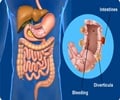Highlights
- Family meal practices may be associated with reduced risk of obesity in adults.
- The structure of family meals may be as or more important than their frequency.
- Adults who reported never watching TV or videos during family meals had significantly lower odds of obesity.
Prior to this, though, few studies had examined possible connections between mealtime practices or family meal frequency and health outcomes in a large, population-based group of adults.
The data was from the 2012 Ohio Medicaid Assessment Survey, a telephone survey of Ohioans. Included in the study were 12,842 survey participants who said that they ate at least one family meal in the week prior to their interview.
More than half of participants reported eating family meals on most days, 35 percent on some days and 13 percent on few days per week. One third of the study participants were obese. About a third watc
hed TV or videos most of the time during family meals and 36 percent said they never did.
Tumin and Anderson's analysis found the lowest odds of obesity for those adults who engaged in both healthy practices - eating home-cooked food and doing it without a TV or video on - every time they ate a family meal.
Though family-meal frequency did not emerge as a possible contributor to obesity, that doesn't mean it doesn't carry other perks for families, including social and emotional health, Tumin said.
- Adults who reported never watching TV or videos during family meals had significantly lower odds of obesity compared with peers who always watched something during mealtimes.
- Those whose family meals were all home-cooked also had lower odds of obesity than other adults who ate some or no home-cooked meals.
- The structure of family meals may be as or more important than their frequency.
"This highlights the importance of thinking critically about what is going on during those meals, and whether there might be opportunities to turn the TV off or do more of your own food preparation," said Tumin.
"Obesity was as common in adults who ate family meals one or two days a week as it was in those who ate family meals every day. Regardless of family meal frequency, obesity was less common when meals were eaten with the television off and when meals were cooked at home," she said.
The results held up after the researchers took into account other differences in the study population, including employment status, whether they were married, race, education and age. Because it was based on a survey of current behavior and weight, the study does not offer evidence of a cause-and-effect relationship between meal habits and weight.
Reference
- Rachel Tumin and Sarah E. Anderson,Television, Home-Cooked Meals, and Family Meal Frequency: Associations with Adult Obesity, Journal of the Academy of Nutrition and Dietetics (2017) http://www.andjrnl.org/article/S2212-2672(17)30069-2/fulltext.
Source-Medindia
















